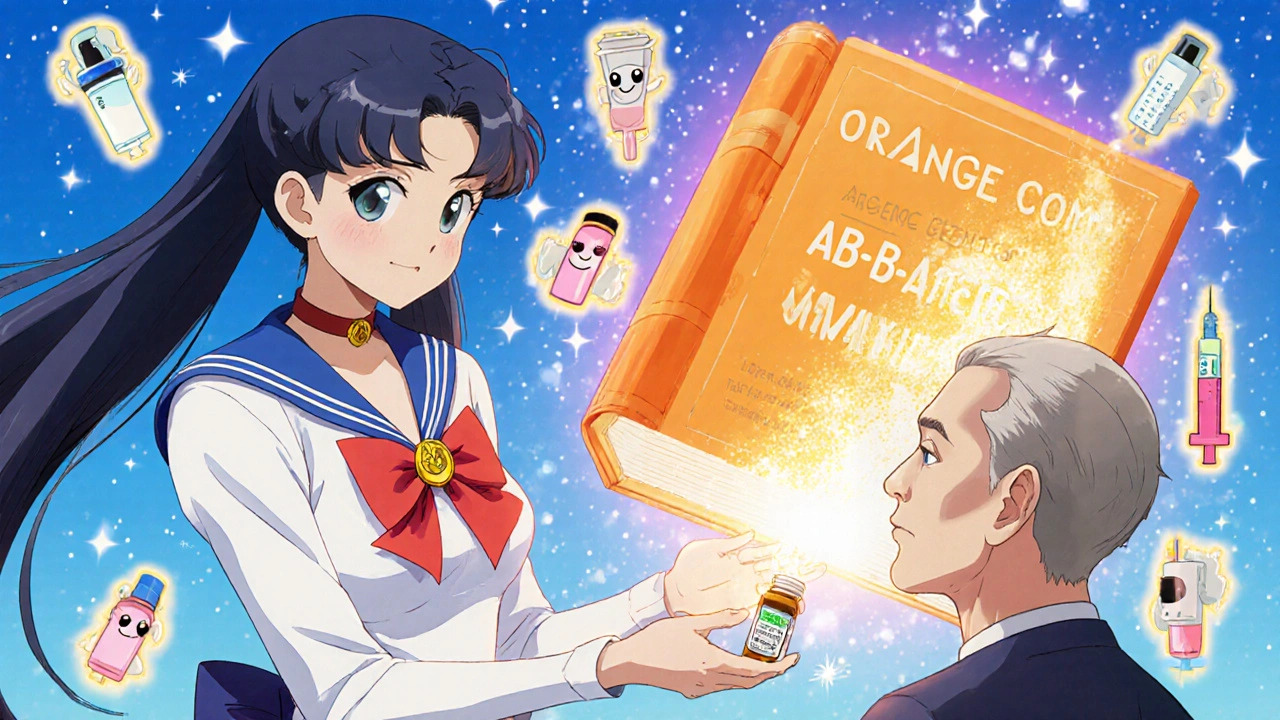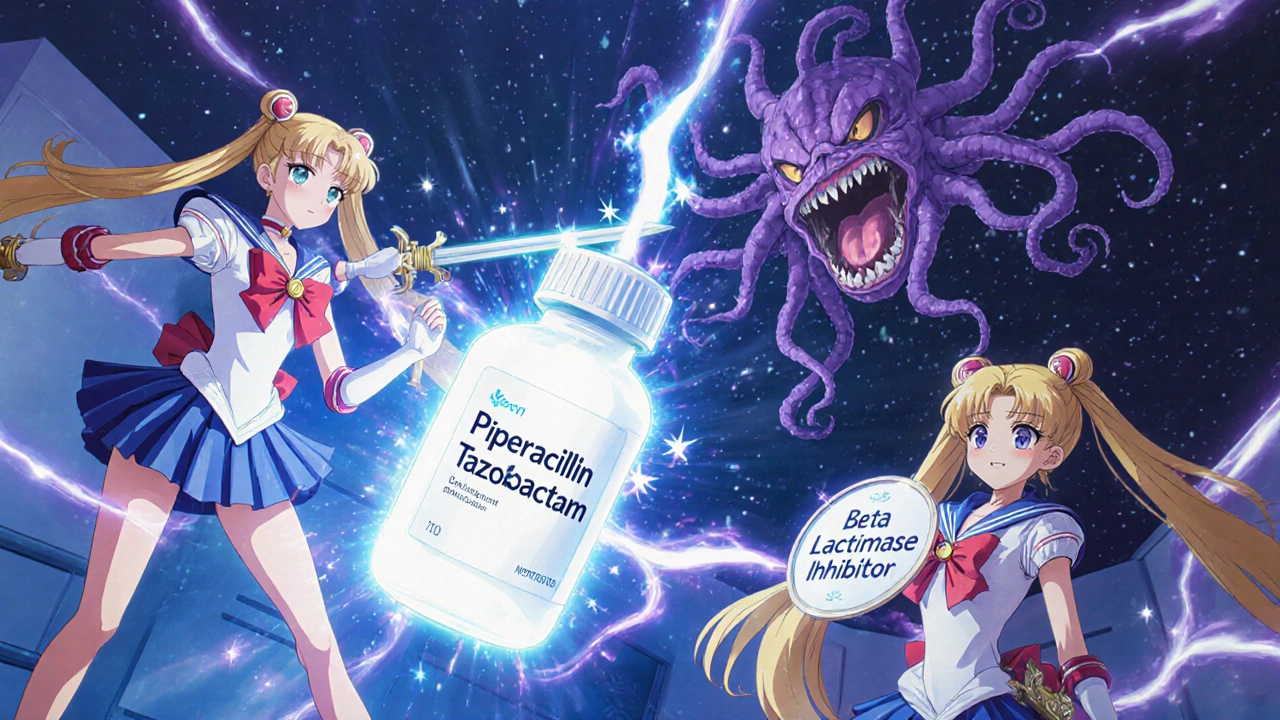When you’re prescribed an antibiotic like piperacillin-tazobactam, you might not realize you’re getting a combo drug. These aren’t just two pills in one bottle-they’re carefully engineered mixtures of two or more active ingredients, often designed to fight tough infections that single antibiotics can’t handle alone. Think of it like a one-two punch: one drug attacks the bacteria, the other blocks the bacteria’s defense system. And now, thanks to generic versions hitting the market, these powerful treatments are becoming far more affordable.
What Exactly Are Antibiotic Combination Products?
Antibiotic combination products aren’t random mixes. They’re FDA-approved formulations where two or more antibiotics-or an antibiotic plus a delivery device-are combined to improve effectiveness. Common examples include amoxicillin-clavulanate (Augmentin), piperacillin-tazobactam (Zosyn), and ceftriaxone-sulbactam. These aren’t just convenience products; they’re clinical tools. For instance, tazobactam doesn’t kill bacteria on its own. It shuts down enzymes that break down piperacillin, letting the antibiotic work longer and stronger.
The FDA classifies these as combination products because they can involve drugs, devices, or biological agents working together. Some come as injectables in vials, others in prefilled syringes or even inhalers. The key is that the whole package-the drug and how it’s delivered-is treated as one medical product.
How Do Generic Versions Get Approved?
Generic versions don’t just appear overnight. They follow a strict path called the Abbreviated New Drug Application (ANDA). This means the maker doesn’t have to run new clinical trials proving the drug works. Instead, they must show their version is identical in strength, dosage, safety, and performance to the brand-name version-the Reference Listed Drug (RLD).
For simple pills, this is straightforward. But for combination products? It gets messy. If the product includes a device-like a pre-filled syringe or an inhaler-it’s called a generic drug-device combination product (g-DDCP). These require extra proof: the device must deliver the exact same dose, at the same rate, in the same way. Even a slightly different needle size or button feel can trigger regulatory red flags.
The FDA’s Office of Combination Products (OCP) decides which center reviews the application-drug, device, or biologics-based on the product’s Primary Mode of Action. If the drug does the main job, it’s reviewed under the drug pathway. That’s where ANDAs apply. But if the device is critical to how the drug works, the review gets more complex.
When Did Generic Antibiotic Combinations First Arrive?
The first major win came on October 26, 2010, when Hospira launched the first generic version of piperacillin-tazobactam for injection in the U.S. This wasn’t just a milestone-it was a signal. If a complex IV antibiotic combo could go generic, others could too. Since then, more have followed, including generics for amoxicillin-clavulanate and other injectable combos.
But availability isn’t uniform. Some combos still don’t have generics because the patents are still active, or because the cost to prove equivalence is too high. Manufacturers need to show every part of the product-down to the packaging and labeling-matches the original. That means testing for stability, sterility, and even how the device performs under stress. It’s expensive. And that’s why some generics take years to appear.

Do Generic Combinations Work as Well as Brand Names?
Yes-when they’re approved. The FDA requires therapeutic equivalence. That means if you switch from brand to generic, your body should respond the same way. No difference in how fast the drug enters your bloodstream, no difference in how long it lasts, no difference in side effects.
Studies back this up. A 2021 analysis in Nature Communications looked at 13 antibiotics and found that generic versions performed just as well in real-world use. Patients had the same recovery rates, same infection clearance, same hospital readmission numbers. The only big difference? Price.
After generics entered the market, prices dropped by 30% to 80%. For something like piperacillin-tazobactam, which can cost over $1,000 per dose in hospitals, that’s life-changing. It means more patients get treated. More hospitals can stock it. More people survive serious infections.
Why Aren’t All Antibiotic Combos Available as Generics?
It’s not just about patents. Some combos are harder to copy than others. Take drug-device combos. If the original product uses a custom-designed auto-injector with a specific spring mechanism or needle shield, the generic maker has to replicate it exactly. Not “close enough.” Exactly.
Then there’s the legal side. State laws in the U.S. often only allow pharmacists to substitute generics for single-drug pills. They don’t clearly cover combos. So even if a generic version exists, a pharmacist might not be allowed to switch it without a doctor’s OK. That creates confusion. Patients get the brand because it’s what’s on the script-even if the generic is cheaper and just as good.
And some combos are simply not profitable to copy. If the original drug is used in a small patient group-like a rare infection in ICU patients-the market is too small to justify the $5 million to $10 million it can cost to get FDA approval for a generic.

What’s the Real Impact on Patients and Hospitals?
The numbers speak loudly. Between 2010 and 2020, generic drugs saved the U.S. healthcare system an estimated $2.2 trillion. Antibiotic combos are part of that. Hospitals that switched to generic piperacillin-tazobactam saved thousands per dose. That money could go to hiring nurses, upgrading equipment, or expanding infection control programs.
For patients, lower costs mean better adherence. If you’re facing a $500 out-of-pocket bill for an antibiotic combo, you might skip doses or stop early. With a $50 generic, you’re far more likely to finish the full course. That’s not just about saving money-it’s about stopping antibiotic resistance.
But here’s the catch: not all combos saw a surge in use after generics arrived. One study found that prescriptions for aztreonam jumped 406% after its generic came out-but that was because a new inhalation therapy for cystic fibrosis launched at the same time. So the rise wasn’t just because it was cheaper. It was because doctors started using it differently. This shows that market behavior isn’t predictable. You can’t assume lower price = higher use. Context matters.
What’s Next for Generic Antibiotic Combos?
The FDA is working on it. In September 2024, they held a conference called REdI to update manufacturers on best practices for submitting combo product applications. They’re trying to make the process clearer, faster, and less expensive-especially for g-DDCPs.
Experts agree: we’re heading into a wave of new combination products. More inhalers, more auto-injectors, more smart delivery systems. If we don’t fix the legal and regulatory gaps now, we’ll face the same bottlenecks again. That means patients could wait years longer for affordable versions of life-saving drugs.
The path forward? Better laws. Clearer rules. More transparency. And more pressure on regulators to treat combination products as what they are: essential tools, not outliers.
How to Know If Your Antibiotic Combo Has a Generic
If you’re on a combo antibiotic and want to save money, ask your pharmacist. They can check the FDA’s Orange Book-a public database that lists approved generics and their equivalence status. Look for the “AB” rating: that means it’s therapeutically equivalent.
Don’t assume your doctor knows. Many don’t track generic availability for combo products. Be proactive. Bring up the cost. Ask: “Is there a generic version of this?” If they say no, ask why. Sometimes, it’s just because no one’s asked before.
And if you’re a healthcare provider: consider prescribing generics when available. Not just to save money-but to help patients stick with treatment. That’s how you win the bigger battle: against infection, and against resistance.
Are generic antibiotic combination products as effective as brand-name ones?
Yes. The FDA requires generics to prove they are therapeutically equivalent to the brand-name version. That means they deliver the same amount of active ingredients at the same rate and produce the same clinical results. Studies show no difference in cure rates, side effects, or patient outcomes when switching from brand to generic combo antibiotics.
Why are some antibiotic combination products still not available as generics?
Several reasons: patent protection may still be active, the cost to prove equivalence (especially for drug-device combos) can exceed $10 million, or the market is too small to justify the investment. Some combos also involve complex delivery systems-like custom inhalers or auto-injectors-that are hard to replicate exactly without new testing.
Can pharmacists automatically substitute a generic antibiotic combo for the brand name?
Not always. Many state laws only allow substitution for single-drug prescriptions. For combination products-especially those with devices-pharmacists may be legally restricted from switching without a new prescription from the doctor. This creates confusion and can prevent patients from getting cheaper options even when they’re available.
How much money can I save with a generic antibiotic combination product?
Savings vary, but typically range from 30% to 80% off the brand-name price. For example, a single dose of brand-name piperacillin-tazobactam can cost over $1,000 in a hospital setting. The generic version can cost under $200. For patients paying out-of-pocket, that means saving hundreds per prescription.
Do generic antibiotic combos have more side effects?
No. Generic versions must meet the same safety standards as brand-name products. The FDA requires identical active ingredients, strength, dosage form, and route of administration. Any differences in inactive ingredients (like fillers) are reviewed to ensure they don’t affect safety or effectiveness. There’s no evidence that generics cause more side effects.
How do I find out if a generic version of my antibiotic combo exists?
Ask your pharmacist or check the FDA’s Orange Book online. Search by the brand name (e.g., Zosyn) and look for products with an “AB” rating-this means they’re approved as therapeutically equivalent. You can also ask your doctor to prescribe the generic if available. Don’t assume it’s not an option-many providers aren’t aware of recent generic approvals.

Shawn Daughhetee
November 23, 2025 AT 19:33Just got prescribed piperacillin-tazobactam last week and asked my pharmacist if there was a generic-she looked at me like I spoke Klingon. Turned out there was, and it saved me $800. Why is this info so hard to find?
Patrick Marsh
November 25, 2025 AT 04:19Pharmacists can't substitute combo generics in most states. It's not their fault. The law is broken.
Danny Nicholls
November 25, 2025 AT 13:55This is why I love healthcare nerds 😍 I had no idea combo drugs even existed until my cousin got sepsis and they threw Zosyn at her. Now I'm obsessed. Thanks for the deep dive!
Miruna Alexandru
November 27, 2025 AT 05:15The real tragedy isn't the lack of generics-it's that the FDA's Office of Combination Products still operates like a 1990s bureaucracy. They treat drug-device combos like fragile porcelain, when in reality, they're just medicine with a plastic shell. The regulatory overreach is costing lives under the guise of safety.
New Yorkers
November 27, 2025 AT 13:35Let me get this straight-you’re telling me we’ve got a $1,000 antibiotic that works exactly like a $200 version, but we still treat it like it’s made of unicorn tears? This isn’t medicine. This is corporate theater with IV drips. And don’t even get me started on how hospitals hoard brand names because their procurement officers are scared of liability. We’re not curing infections-we’re performing accounting rituals.
Meanwhile, patients in rural clinics are getting sent home with incomplete courses because they can’t afford the brand. And then we wonder why superbugs are laughing at us.
It’s not about innovation. It’s about monopolies dressed in lab coats. The FDA’s Orange Book? It’s a graveyard of missed opportunities. If you can’t get a generic approved because the needle on the syringe is 0.1mm thicker, then the system is broken. Not the science. The system.
And don’t give me that ‘safety first’ nonsense. We’ve had generic insulin for decades and people still die. This isn’t about risk-it’s about profit. Someone’s making millions off the fact that you don’t know the difference between Zosyn and its generic. And that’s not healthcare. That’s exploitation.
Doctors don’t know because they’re too busy filling out forms. Pharmacists can’t switch because the law says no. Patients don’t ask because they assume it’s all the same. And the cycle keeps spinning. We need a revolution. Not in medicine. In accountability.
Next time you get a combo antibiotic, ask: ‘Who’s profiting from my suffering?’ And then demand change. Not just for you-for everyone who can’t afford to be sick.
Holly Schumacher
November 27, 2025 AT 20:33Actually, the FDA's therapeutic equivalence standards for combination products are FAR more rigorous than most people realize-especially for drug-device combos. You can't just swap out a syringe plunger and call it equivalent. The viscosity of the solution, the force required to depress the plunger, even the material of the rubber stopper-all affect drug stability and delivery kinetics. The fact that generics even exist at all is a miracle of regulatory engineering. Stop romanticizing the ‘cheap alternative’ narrative-it’s not that simple.
And yes, some states still don’t allow substitution because the laws were written before these products existed. That’s a legislative failure, not a pharmaceutical one. Blame the state boards, not the FDA. And before you say ‘just change the law,’ try getting 50 different state legislatures to agree on anything related to healthcare.
Nikhil Chaurasia
November 28, 2025 AT 01:52I work in a hospital in Mumbai, and we’ve been using generic piperacillin-tazobactam for over 5 years now. No issues. No outbreaks. No drop in cure rates. The only difference? We can treat 3x more patients. I’m glad someone in the US is finally talking about this. Sometimes, the simplest solutions are the most powerful.
ann smith
November 28, 2025 AT 10:40This is such a hopeful story 💪 I love seeing science and access come together. Every time a generic becomes available, it’s not just a cost cut-it’s a chance for someone to get better. Thank you for writing this. Let’s keep pushing for change. 🌱
Julie Pulvino
November 29, 2025 AT 23:48My dad was on Zosyn last year. We asked about the generic and the nurse said ‘oh, we don’t use those here.’ Turned out they were just using the brand because it was in the default order set. I had to call the pharmacy director to get it switched. It’s not about the science-it’s about inertia. So frustrating. But also… kind of solvable? Just need someone to care enough to change the defaults.